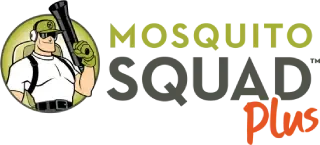Protect Your Ash Trees! Identify and Deter Emerald Ash Borers
Posted by Mosquito Squad
May 10, 2024

Emerald ash borers (EABs) are small, metallic-green, invasive beetles that pose a big threat to ash trees. The National Park Service reports the astounding and continual decline of ash populations due to this pest. To protect the ash trees in your yard from this insect, it’s important to know the signs of ash borer damage and treat the trees before it’s too late!
What Does an Emerald Ash Borer Look Like?
Emerald ash borer beetles only grow up to half an inch long, making them difficult to spot from a distance. They have a pointed near-oval shape, distinct metallic-green coloration, short antennae, six short legs, and flattened bodies. Their shape helps them slip through crevices in tree bark, bore holes in the live wood, and safely lay their eggs.
Where Did the Emerald Ash Borer Come From?
Emerald ash borers originated in northeastern Asia before coming to the States. They were first discovered in southeastern Michigan, where they harmed and killed many ash trees. They likely came to North America by boring into wooden packing materials and laying eggs that were then transported throughout the country.
Signs of Emerald Ash Borer Presence
Detecting an infestation early is key to preventing widespread damage to ash trees. Some signs that indicate an emerald ash borer infestation include:
- Thinning canopy – Infested trees often exhibit thinning or dying branches, beginning at the top of the tree, as the ash borers disrupt the tree's nutrient flow.
- D-shaped exit holes – As adult beetles emerge from the tree after completing their life cycle, they leave small, D-shaped exit holes in the bark.
- Increased woodpecker activity – Woodpeckers are natural predators of emerald ash borers and may be attracted to infested trees. Look for increased pecking activity as the birds feed on the larvae beneath the bark.
- Bark splitting – Emerald ash borers leave distinct, vertical splits in the bark of infested trees as they disrupt the tree's vascular system and cause it to callus.
- Gallery lines – Larvae create curvy, light-colored lines called galleries under the bark of an ash tree. These carved channels harm the tree structure and can prevent nutrients from moving throughout it.
How to Protect Ash Trees
While ash borers can devastate ash trees, there are several steps you can take to protect your trees from an infestation.
- Detect the problem early – Regularly inspect ash trees for signs of infestation, including branch thinning, bark splits, exit holes, or unusual woodpecker activity. This will help you promptly start treatment and minimize damage.
- Seek professional tree treatment – Once you have an emerald ash borer problem, professional control is the best way to tackle the issue, especially since EABs damage a tree from within and can be difficult to find. Consult a certified arborist to determine the appropriate treatment method and timing. The professionals at Monster Tree Service offer tree insect control and management services that can be customized to target ash borers.
- Treat your yard too – Control EABs on or near the ground and deter additional populations from entering your property! With a Squad Invader Guard treatment from Mosquito Squad (that’s us!), you’ll be protecting all the nearby noninfested trees at once.
- Thoughtfully move wood – Inspect firewood and other wood materials before moving them around your yard, as they can harbor EAB larvae. Avoid moving wood across long distances.
- Plant EAB-resistant ash trees – Some ash tree species have higher resistance to EAB infestations, such as Manchurian ash and Mancana ash. Consult a nursery professional for recommendations.
Get Backup to Safeguard Your Ash Trees
EABs are destructive little bugs! When you combine an arborist’s services with an effective yard spray treatment from the professionals at Mosquito Squad, you can give your trees the best possible chance of survival. Our invasive pest and emerald ash borer treatment manages pests that are on the ground or low foliage and deters future pests for up to 21 days. These bugs move very slowly when on the ground; with routine services, we should be able to get them before they get to the next tree.
Be proactive and contact the Squad today at (877) 332-2239 or request a quote online.
